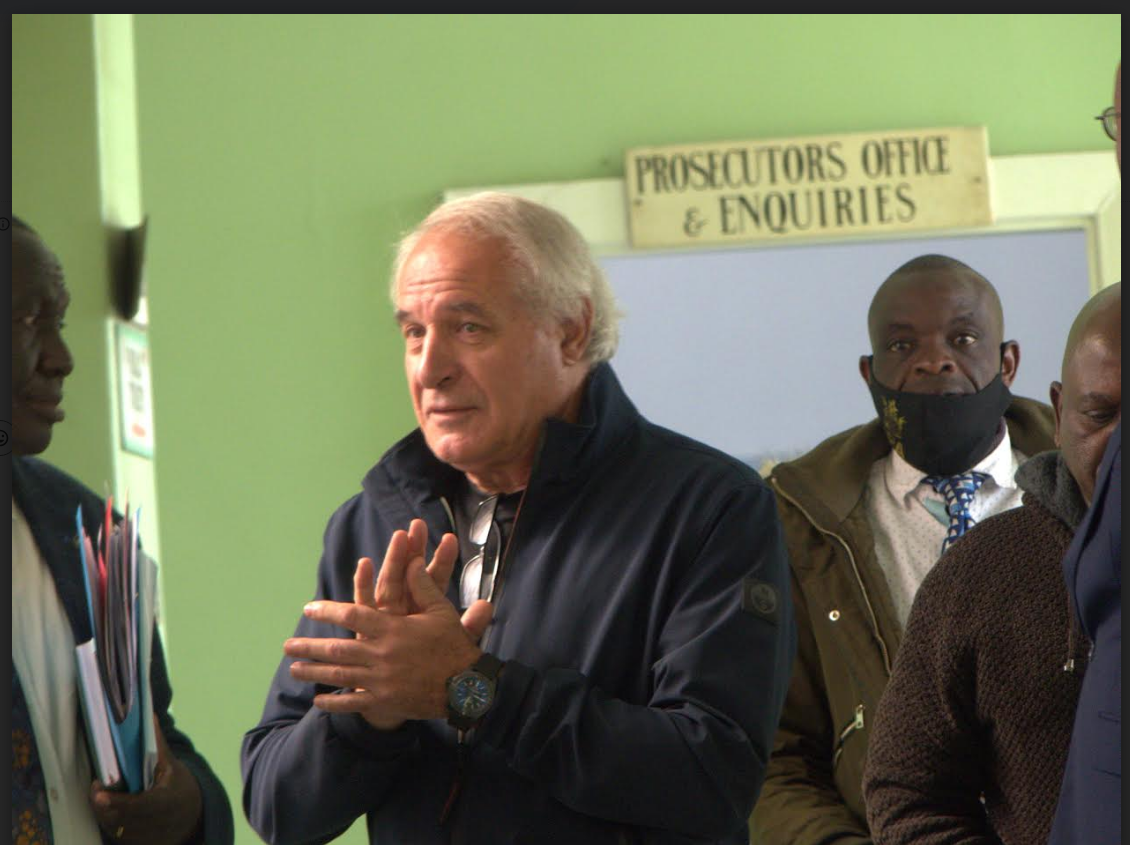
The current time is one of deep reflection for African nations. We stand at a crossroads, filled with potential yet constantly grappling with the ghosts of fragmented development and recurring political instability.
Every new government comes in with a "plan," often discarding the blueprints of the last, leading to a perpetual cycle of half-finished projects and wasted resources. We build a few roads, maybe a hospital wing, and then the money or the political will runs out. We are running sprints when the colossal task before us, that of continental integration, industrialisation, and shared prosperity, requires a marathon runner's heart.
This is why the process playing out thousands of miles away in Beijing, the seamless transition from China’s 14th Five-Year Plan (FYP) to the planning of the 15th FYP is not just a matter of distant geopolitics; it is a profound lesson in governance for the entire African continent.
The Chinese Five-Year Plan system is more than a budget projection; it is a binding national contract that dictates where the country will be in half a decade, and crucially, how that five-year step contributes to the ultimate goal of "essentially achieving socialist modernisation" by 2035. As President Xi Jinping stated, this continuous planning represents a "significant political strength." For Africa, where political cycles often dictate economic policy, the central lesson here is the power of strategic resolve and patience.
The political trap of short-termism
In too many African nations, politics is a battle for the next election. Our leaders, under immense pressure from electorates expecting immediate relief, often find themselves forced to prioritise quick, visible wins. They may focus on importing cheaper goods to lower immediate prices, or allocate funds to small, local projects that can be quickly inaugurated before the next polls. This provides temporary relief but starves the system of the sustained investment needed for true transformation.
These short-term actions rarely solve the foundational, long-term problems that trap our nations in poverty and underdevelopment: the lack of integrated power grids, the absence of continental rail networks, and underfunded technical education systems.
These foundational projects are complex, take decades, and offer no immediate political glory. They demand that a leader spend their entire term laying pipes or pouring concrete for a massive benefit that will only be felt and claimed by the leader who follows them. This requires a level of political maturity and strategic continuity that has often eluded us, resulting in "white elephant" projects abandoned after a regime change or a shift in donor priorities.
- China’s economic picture grows murkier in Xi’s ‘new era’
- Chinese Tech stocks slump as Xi's new team of loyalists lack market-mindedness
- China: The 30-year rule
- Beyond Beijing’s “gift” to Zimbabwe
Keep Reading
The Chinese model, however, insists on exactly this commitment. President Xi’s emphasis on maintaining "strategic resolve and patience for long-term tasks" and "persist[ing] in implementing a single blueprint to the end" is a direct challenge to the political short-termism plaguing many African capitals. The lesson is simple: our National Development Plans (NDPs) cannot be optional manifestos; they must become sacrosanct national documents that transcend the political lifespan of any single leader or party. They must be enshrined in law, with clear accountability mechanisms to ensure they survive the next election.
Infrastructure as the foundation of sovereignty
A key tenet of the Chinese FYP strategy is the directive to "focus on our own affairs." In a turbulent world, China’s leadership has consistently steered the country towards internal strength, implementing the new development philosophy and fostering the move towards "new quality productive forces." The goal is clear: to be masters of their own destiny, technologically and industrially. This focus has translated into impressive, self-reliant innovation, highlighted by their success in developing high-performance chips, proprietary operating systems, and a staggering production of New Energy Vehicles.
This stands in stark contrast to the African reality. Despite vast mineral wealth and a growing population, many African countries remain net importers of almost everything, from refined fuel to basic furniture. Our economies are structurally dependent, making us vulnerable to every global shock. We export raw materials and import finished goods, a cycle that ensures we capture the least value from our own resources.
This is where the Chinese lesson becomes critical: infrastructure must be the first and most relentless priority.
Infrastructure, in this context, is not just roads; it is the backbone of economic sovereignty. A nation cannot industrialise without cheap, reliable electricity. A continent cannot trade effectively without integrated road and rail networks. For African nations, moving forward requires borrowing the "strategic resolve" to dedicate massive, consistent funding towards:
Power Generation and Distribution, making electricity a reliable commodity, not a luxury, thereby reducing the cost of doing business and attracting manufacturing.
Regional Integration, Building the missing links of the Trans-African Highway and continental rail lines to facilitate intra-African trade, which is essential for creating the large markets that can support large-scale industrialisation.
Value Addition Facilities, Investing in the capacity to process our own raw materials at home, be it cocoa into chocolate, cotton into textiles, or bauxite into aluminium, thereby capturing greater wealth and creating jobs.
As long as Africa relies on external markets for its basic needs and external technology for its advanced needs, we will remain vulnerable. The Chinese strategy, which places independent industrial development at its core, is a clear reminder that true independence is industrial independence. Our national plans must focus on what we build, not what we buy.
The pragmatic pursuit of prosperity
Another striking element in the Chinese governance philosophy is the unwavering commitment to a "people-centred approach" in planning. While China's political system differs from Africa’s multi-party democracies, the method of engagement and the focus on delivery offer valuable insight.
The Chinese government explicitly anchors its work in "people's livelihoods," treating employment as the "top priority" and emphasising the steady promotion of "Common Prosperity." This is a pragmatic social contract: the state earns its legitimacy by delivering material improvements in jobs, housing, infrastructure, and poverty reduction over time.
The process of drafting the FYP, with its symposiums with grassroots representatives and the solicitation of millions of online suggestions, shows a strategic commitment to making sure the national plan is relevant to the street level. It demonstrates a belief that the ultimate goal of development is to enable people to live a "happier life."
For African leaders, this translates into Lesson 3: Pragmatic Inclusion. Our planning must be genuinely felt in the lives of the majority, not just a politically connected elite.
The Employment Priority, With Africa's youth bulge, job creation must be the central metric of success for every FYP or NDP. High-quality growth is meaningless if it is jobless growth. The plans must detail exactly how investment in infrastructure, for example, will translate into x number of permanent jobs for youth.
The Equity Focus, The pursuit of "Common Prosperity" in China, reminds us that African development must also be equitable. Projects must be designed to benefit citizens across ethnic and regional lines to ensure national stability and cohesion. If development is perceived as favouring one region or group, the whole plan is set up for failure. Transparency in project selection and resource allocation is the essential democratic filter that must be applied to this centralised planning approach.
The commitment of nearly 100 trillion yuan in the livelihood sector during the 14th FYP period is a staggering display of priority. It shows that economic growth is not an end in itself, but a tool for ensuring social security, education, and health. Africa must similarly ensure that its newfound wealth from resources or trade is reinvested directly into the social foundations that guarantee a higher sense of gain, happiness, and security for its people.
Building African resilience
As China plans its 15th FYP, it is clear that its strategy is designed to build resilience against external shocks. Its leadership knows that no matter how the external environment changes, the nation must be structurally strong enough to weather the storm. This is a crucial lesson for African economies, which often suffer the most from global inflation, supply chain disruptions, or volatile commodity prices.
For Africa to build similar resilience, our long-term plans must explicitly address economic vulnerabilities by: Diversifying Manufacturing, Moving away from a reliance on one or two cash crops or minerals and creating diverse, high-value manufacturing sectors that serve both domestic and international markets.
Food Sovereignty, investing heavily in agricultural science, irrigation, and modern farming techniques to ensure that no African nation is dependent on food imports. Food security is the bedrock of political stability. Regional Integration, Activating the African Continental Free Trade Area (AfCFTA) by implementing the necessary infrastructure and legal frameworks. The FYP model's success is based on operating within a massive, cohesive domestic market; AfCFTA must become Africa’s own massive, cohesive market.
The Chinese experience, from the 14th to the 15th FYP, is a powerful reminder that national transformation is a marathon, not a sprint. It requires moving from reactive governance to proactive, patient, and persistent planning. We must stop seeking the quick fix and embrace the long game.
African leaders must borrow the 'strategic resolve and patience' inherent in the FYP system and tailor it to the unique challenges and vast potential of the continent. We must define our own path to modernisation one that prioritises independent industrialisation, integrated infrastructure, and equitable prosperity. We must not be swayed by temporary global events or disturbed by the turbulent waves of international opinion. Instead, like China, we must "stay confident, maintain resolve, and focus on our own affairs."
The summit of true African prosperity is near, but we must not shy away from the labour. Embarking on this new, long voyage, we can and must write a new chapter one where African nations finally achieve lasting success through persistent, patient, and purposeful effort, making sure that the next five years are a solid step on the path to an African-defined modernisation.











